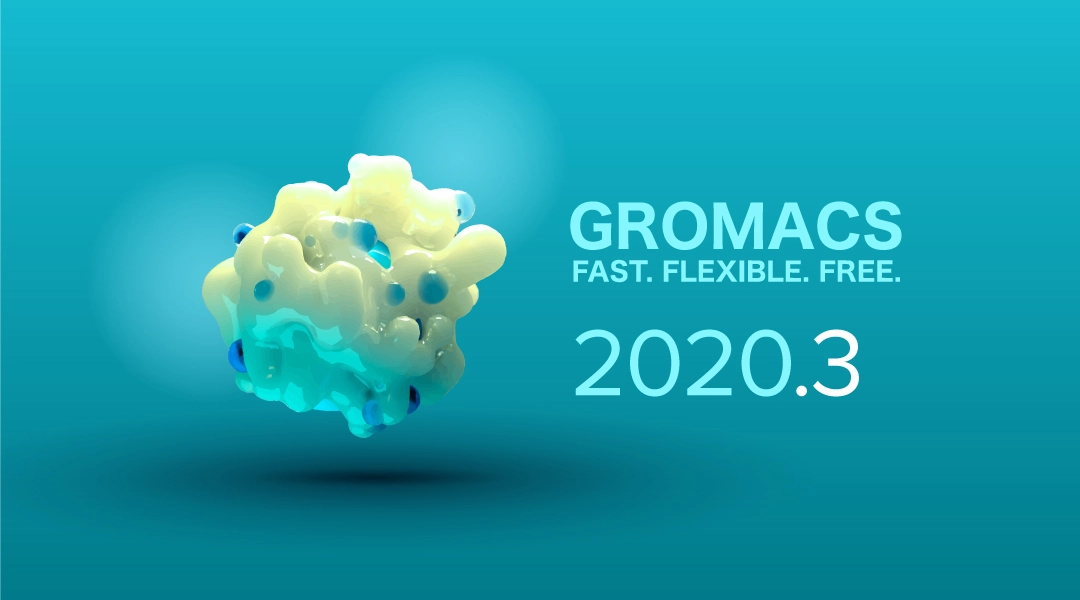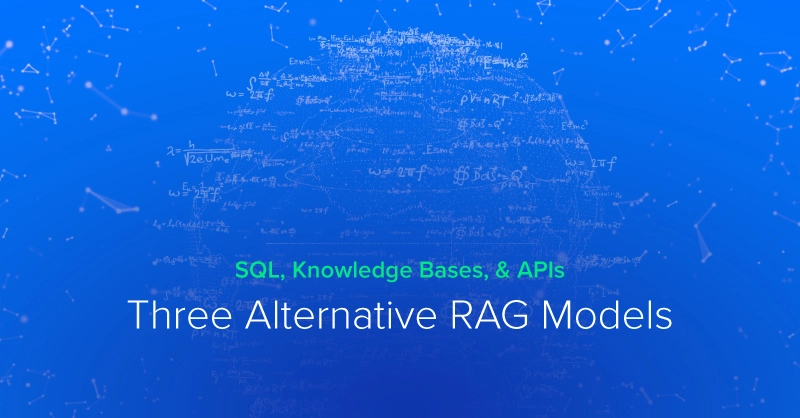
GROMACS 2020.3 Patch Release
GROMACS 2020.3 was released on July 9, 2020. Patch releases may have been made since then, please use the updated versions! Here are some highlights, along with more detail in the links below!
Highlights include:
- GROMACS build is now more reproducible
- Update gmx cluster to write correct PDB files and index files with cluster frames
- Allow using COM of previous step as PBC reference
- Transitional external API headers and library
- Restraint module for gmxapi MD extension code
- Enable output of average pull forces and positions
Click here to view the full Release notes.
What is GROMACS?
GROMACS is a versatile package to perform molecular dynamics, i.e. simulate the Newtonian equations of motion for systems with hundreds to millions of particles.
It is primarily designed for biochemical molecules like proteins, lipids and nucleic acids that have a lot of complicated bonded interactions, but since GROMACS is extremely fast at calculating the non-bonded interactions (that usually dominate simulations) many groups are also using it for research on non-biological systems, e.g. polymers.
Interested in accelerating MD simulations?
Learn more about GROMACS Certified Systems starting at $4,300
Creating Faster Molecular Dynamics Simulations with GROMACS 2020
The long-term collaboration between NVIDIA and the core GROMACS developers has delivered a simulation package for biomolecular systems that performs incredibly fast. Previous GROMACS packages saw a spike in performance using GPU acceleration, but at a computational expense, especially when using multiple GPUs to run a single simulation. The new performance features available in GROMACS 2020 addresses these issues, and now for many typical simulations the entire timestep can run on the GPU, avoiding CPU and PCIe bottlenecks. Inter-GPU communication operations can now operate directly between GPU memory spaces, resulting in large performance improvements.
GROMACS 2020.3 Release Notes
Fixes where mdrun could behave incorrectly
Fixes for gmx tools
Fix incorrect reading of certain older tpr files
Certain older tpr files could be read incorrectly, usually leading to an exit with a memory allocation error.
Fix segmentation fault with gmx lie
The tool would crash due to mismatching sizes of energy terms in the file and F_NRE.
Issue 3547
Fix matrix reading in gmx xpm2ps
The tool would fail to read a matrix if no second matrix was provided.
Issue 3551
Fix uninitialized variable warnings in gmx hbond
Tool would produce garbage due to using uninitialized memory.
Issue 3550
Actually fix gmx do_dssp
The tool was still broken and gave incorrect results after the previous fix.
Issue 3444
Allow configuration of dssp default path
Users can configure the default path for dssp using GMX_DSSP_PROGRAM_PATH.
Issue 3520
The tool could fail when running simple inputs due to memory access errors caused by accessing free’d memory.
Issue 3582
Fixes that affect portability
Update MSVC SIMD flags
Newly supported SIMD flags may improve performance on recent x86 running Windows.
Fix error with tinyxml2 linking
The signature for linking the external library was wrong.
Miscellaneous
Updated message on using GPU with non-dynamical integrator
The GPU implementation of PME and bonded forces requires dynamical integrator. The message that informs user why using GPU for PME or bonded forces is not supported with non-dynamical integrator was made more clear.
Have any questions about GROMACS or other applications for molecular dynamics?
Contact Exxact Today

GROMACS 2020.3 Release
GROMACS 2020.3 Patch Release
GROMACS 2020.3 was released on July 9, 2020. Patch releases may have been made since then, please use the updated versions! Here are some highlights, along with more detail in the links below!
Highlights include:
- GROMACS build is now more reproducible
- Update gmx cluster to write correct PDB files and index files with cluster frames
- Allow using COM of previous step as PBC reference
- Transitional external API headers and library
- Restraint module for gmxapi MD extension code
- Enable output of average pull forces and positions
Click here to view the full Release notes.
What is GROMACS?
GROMACS is a versatile package to perform molecular dynamics, i.e. simulate the Newtonian equations of motion for systems with hundreds to millions of particles.
It is primarily designed for biochemical molecules like proteins, lipids and nucleic acids that have a lot of complicated bonded interactions, but since GROMACS is extremely fast at calculating the non-bonded interactions (that usually dominate simulations) many groups are also using it for research on non-biological systems, e.g. polymers.
Interested in accelerating MD simulations?
Learn more about GROMACS Certified Systems starting at $4,300
Creating Faster Molecular Dynamics Simulations with GROMACS 2020
The long-term collaboration between NVIDIA and the core GROMACS developers has delivered a simulation package for biomolecular systems that performs incredibly fast. Previous GROMACS packages saw a spike in performance using GPU acceleration, but at a computational expense, especially when using multiple GPUs to run a single simulation. The new performance features available in GROMACS 2020 addresses these issues, and now for many typical simulations the entire timestep can run on the GPU, avoiding CPU and PCIe bottlenecks. Inter-GPU communication operations can now operate directly between GPU memory spaces, resulting in large performance improvements.
GROMACS 2020.3 Release Notes
Fixes where mdrun could behave incorrectly
Fixes for gmx tools
Fix incorrect reading of certain older tpr files
Certain older tpr files could be read incorrectly, usually leading to an exit with a memory allocation error.
Fix segmentation fault with gmx lie
The tool would crash due to mismatching sizes of energy terms in the file and F_NRE.
Issue 3547
Fix matrix reading in gmx xpm2ps
The tool would fail to read a matrix if no second matrix was provided.
Issue 3551
Fix uninitialized variable warnings in gmx hbond
Tool would produce garbage due to using uninitialized memory.
Issue 3550
Actually fix gmx do_dssp
The tool was still broken and gave incorrect results after the previous fix.
Issue 3444
Allow configuration of dssp default path
Users can configure the default path for dssp using GMX_DSSP_PROGRAM_PATH.
Issue 3520
The tool could fail when running simple inputs due to memory access errors caused by accessing free’d memory.
Issue 3582
Fixes that affect portability
Update MSVC SIMD flags
Newly supported SIMD flags may improve performance on recent x86 running Windows.
Fix error with tinyxml2 linking
The signature for linking the external library was wrong.
Miscellaneous
Updated message on using GPU with non-dynamical integrator
The GPU implementation of PME and bonded forces requires dynamical integrator. The message that informs user why using GPU for PME or bonded forces is not supported with non-dynamical integrator was made more clear.
Have any questions about GROMACS or other applications for molecular dynamics?
Contact Exxact Today




